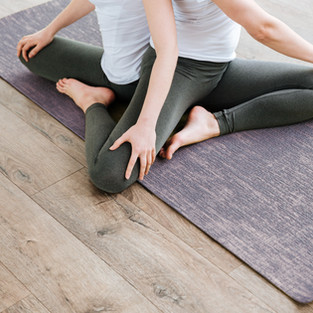
Maintaining a healthy lifestyle is something that has become a more common pursuit for people these days, especially in the sense of making deliberate choices to improve one's diet and body. It can be tricky, however, for a person to tightly monitor the type of diet he chooses to follow. This is because there are many fad diets that have popped up, as they usually do whenever the notion of healthier eating gets popular. In the past, various popular diets have come and gone, telling you to eat no carbs, or all carbs, or no protein, or all protein. Recently, the idea of keeping a diet gluten-free has gained support and popularity, and it may be worth examining closely.
Gluten is a composite of various prolamins and glutelins, which is to say that it is made of "storage protein" found in foods like wheat, rye, barley, and the wheat/rye cross triticale. Gluten is what gives dough its elasticity, making it pliable and easily shaped while allowing it to return to more or less its original shape. This arguably also gives dough a significant part of its texture. Gluten forms when these storage proteins are coaxed out of the flour made from wheat, rye, and the others, through the kneading of dough. Enough time kneading creates the long strands of gluten that give the dough its springiness and form a network that trap fermentation bubbles and make the dough mass rise. Certain types of flours are high in gluten (bread flours) or low (pastry flours), which corresponds to the overall heavy or light texture that is expected from products made from them. A good amount of gluten makes dough chewy, while materials like shortening can be added to result in a lighter, flakier texture such as ideal for pies.

As delicious as it tends to sound, gluten is associated with a number of adverse reactions in certain people, who are afflicted with gluten-related disorders. These include celiac disease, wheat allergies, dermatitis herpetiformis, and others. However, a gluten-free diet for athletes isn't just pursued for these reasons -- even athletes not afflicted with any these disorders have explored the possibilities of just such a diet. It should be noted before anything that the evidence for or against a gluten-free diet improving athletic performance tends to be anecdotal in nature, so it's worth thinking carefully about any large-scale steps to be taken.
1. The first thing to do would be to determine whether you have any gluten sensitivity. Some people report that a gluten-free diet helps reduce symptoms like diarrhea, abdominal pain, or sluggishness. Gluten sensitivity isn't as dire a concern as celiac disease or the other aforementioned ailments, although it is more common and not as well-understood. Essentially, the body has a distinct response to foods containing gluten, although at this point it is still not clearly understood how this is triggered.
Check with your doctor, who will probably recommend a celiac disease test. If it turns out that you do have celiac disease, a gluten-free diet is likely to be a good move.
2. It's worth noting that gastrointestinal symptoms may not (just) be down to gluten in the diet. Plenty of high-carb products also have a lot of fiber, which -- while good for you -- can result in some discomfort in the gastrointestinal region if consumed a short while prior to heavy exercise.
3. Gluten or no gluten -- because it can be tricky to rely on as-yet-inconclusive studies and accounts -- you have to study up on what food is appropriate in general for good athletic performance. You also know yourself best, from preferences to comfort levels with different types of food.
4. Keep in mind that most of the best carbohydrate sources contain gluten, and as such a gluten-free diet will remove those sources from your menu. You'll need to find a way to obtain the recommended 30-60g of rapidly-absorbed carbs per hour of activity. There are many options -- millet, potato, rice, quinoa, and so on. Most protein sources won't contain gluten buy default (given where it actually comes from), so don't be seduced by savvy marketers who just slap "gluten-free" on everything from butter to fruits to eggs. Those three, as well as other foods like most protein sources (meat, poultry, fish, beans), are inherently and naturally gluten-free.
5. If you do choose to pursue a gluten-free diet, look at it like switching to a vegan diet: the nature of the diet will by default cut out many of your ordinarily-convenient sources for certain nutrients, and you'll need to plan around that. Many who make either change find themselves faced with the risk of potential deficits in key nutrients, which will need to be avoided and overcome by replacing the problematic sources with other foods. Don't be ashamed to get some professional advice from a registered dietitian who has had some experience in sports nutrition.







